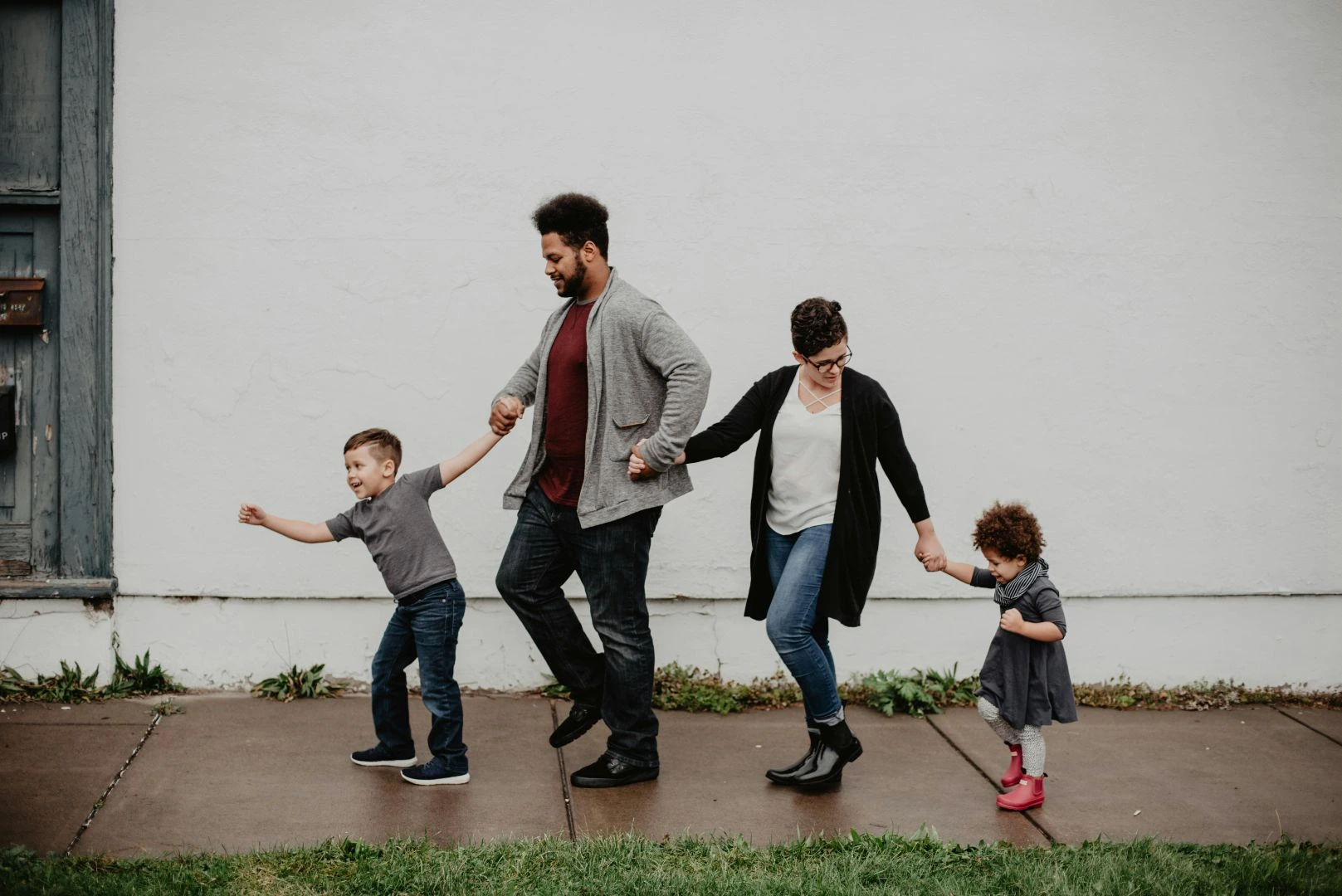Case Studies
How OCBC MyOwn Account Turned a Regulatory Roadblock Into 33% More Conversions With a Mobile-First, Parent-Powered Strategy


{{stats-component}}
Launching a banking product for kids sounds simple until you realise you can’t speak directly to them. OCBC’s MyOwn Account (MOA), designed for children aged 7 to 15, lives entirely within the OCBC Digital app and empowers young users to learn money management under their parents’ guidance. A strong product, with a big ambition but one fundamental roadblock.
We couldn’t target the very audience the product was built for.
Advertising directly to children was off-limits. No kid-focused creatives. No direct targeting. No messaging that felt even remotely child-directed. Our entire core audience was legally unreachable.
Teens (13–15) were technically targetable, but creatively a tough crowd. They reject “financial education” content, respond poorly to parent-driven messaging, and seek autonomy, not instruction.
That left parents as our primary gateway. But today’s digitally savvy parents are overloaded with advice, ads, and expectations. Convincing them to open a banking app for someone else posed its own challenge.
But within these constraints lay the opportunity: MOA wasn’t just a banking product, it was a shared experience. A practical, confidence-building journey between parent and child. We didn’t need to sell features. We needed to spark recognition: “This makes sense for us.”
So we reframed the problem into something solvable:
And with that clarity, ADA got to work.
MOA lives inside a mobile app, so our campaign had to be mobile-native in mindset, format, and journey. Our audience? Digitally fluent parents who toggle between apps, make decisions on the go, and scroll at speed. The campaign had to move at their pace.
We built the solution around three pillars:
We showed up in the platforms parents actually live on: TikTok, Instagram, YouTube, and Meta using vertical, scroll-native videos that looked more like relatable parenting content than financial advertising.
Awareness alone wouldn’t move parents to onboard their children. So we partnered with parenting influencers, community groups, and family-focused forums to spark real conversations. Parents didn’t just hear about MOA, they saw other parents using it.
We adapted Meta’s Advantage+ Shopping Campaign (ASC), typically used in retail for a financial product. ASC automated targeting, matched parents to the right creative moments, and optimised spend based on real-time behaviours.
Google Performance Max and Search captured high-intent users, guiding them from interest straight into onboarding with minimal friction.
Every path led to a clean, mobile-first landing page that simplified MOA into one clear message: This makes financial learning easier for both you and your child.
From discovery to onboarding, the experience was engineered to feel natural, not like a banking campaign interrupting their day.
These formats blended seamlessly into everyday parent scrolling but with an emotional hook: the MOA debit cards (Disney princesses, Marvel superheroes). A simple detail for kids, but a powerful “oh, they’ll love this” nudge for parents.
Every asset deep-linked to a mobile-optimised landing page. No long copy. No complex forms. Just clarity on:
KOL walkthroughs and real family demonstrations strengthened authenticity and answered unspoken concerns (“Is this safe? Is it worth it?”).
As parents moved deeper into the funnel, automated precision took over:
We also ran dual Performance Max streams, one for festive promotions and one for always-on stability, enabling adaptive budget optimisation throughout the campaign.
Creative variants were refreshed and A/B tested continuously, ensuring zero fatigue across platforms.
We layered short bursts during cultural moments (CNY cashback, Disney-themed giveaways) to drive repeat engagement and give parents a timely reason to convert.
Across every touchpoint, the message remained consistent: This isn’t about banking. It’s about giving your child a smarter start through an app you already trust.
The campaign didn’t just resonate, it converted, turning a regulatory challenge into a mobile marketing success.
Through ongoing optimisation and AI-powered signal learning:
increase in branded search between Oct & December
increase in conversion
surge in direct traffic



M1 needed to rethink how customers pre-ordered the Samsung Galaxy S25. The traditional experience of long queues, complex forms, and multiple customer service calls wasn't delivering the seamless journey their customers expected from a leading Singapore telco.
{{stats-component}}
Launching a banking product for kids sounds simple until you realise you can’t speak directly to them. OCBC’s MyOwn Account (MOA), designed for children aged 7 to 15, lives entirely within the OCBC Digital app and empowers young users to learn money management under their parents’ guidance. A strong product, with a big ambition but one fundamental roadblock.
We couldn’t target the very audience the product was built for.
Advertising directly to children was off-limits. No kid-focused creatives. No direct targeting. No messaging that felt even remotely child-directed. Our entire core audience was legally unreachable.
Teens (13–15) were technically targetable, but creatively a tough crowd. They reject “financial education” content, respond poorly to parent-driven messaging, and seek autonomy, not instruction.
That left parents as our primary gateway. But today’s digitally savvy parents are overloaded with advice, ads, and expectations. Convincing them to open a banking app for someone else posed its own challenge.
But within these constraints lay the opportunity: MOA wasn’t just a banking product, it was a shared experience. A practical, confidence-building journey between parent and child. We didn’t need to sell features. We needed to spark recognition: “This makes sense for us.”
So we reframed the problem into something solvable:
And with that clarity, ADA got to work.
MOA lives inside a mobile app, so our campaign had to be mobile-native in mindset, format, and journey. Our audience? Digitally fluent parents who toggle between apps, make decisions on the go, and scroll at speed. The campaign had to move at their pace.
We built the solution around three pillars:
We showed up in the platforms parents actually live on: TikTok, Instagram, YouTube, and Meta using vertical, scroll-native videos that looked more like relatable parenting content than financial advertising.
Awareness alone wouldn’t move parents to onboard their children. So we partnered with parenting influencers, community groups, and family-focused forums to spark real conversations. Parents didn’t just hear about MOA, they saw other parents using it.
We adapted Meta’s Advantage+ Shopping Campaign (ASC), typically used in retail for a financial product. ASC automated targeting, matched parents to the right creative moments, and optimised spend based on real-time behaviours.
Google Performance Max and Search captured high-intent users, guiding them from interest straight into onboarding with minimal friction.
Every path led to a clean, mobile-first landing page that simplified MOA into one clear message: This makes financial learning easier for both you and your child.
From discovery to onboarding, the experience was engineered to feel natural, not like a banking campaign interrupting their day.
These formats blended seamlessly into everyday parent scrolling but with an emotional hook: the MOA debit cards (Disney princesses, Marvel superheroes). A simple detail for kids, but a powerful “oh, they’ll love this” nudge for parents.
Every asset deep-linked to a mobile-optimised landing page. No long copy. No complex forms. Just clarity on:
KOL walkthroughs and real family demonstrations strengthened authenticity and answered unspoken concerns (“Is this safe? Is it worth it?”).
As parents moved deeper into the funnel, automated precision took over:
We also ran dual Performance Max streams, one for festive promotions and one for always-on stability, enabling adaptive budget optimisation throughout the campaign.
Creative variants were refreshed and A/B tested continuously, ensuring zero fatigue across platforms.
We layered short bursts during cultural moments (CNY cashback, Disney-themed giveaways) to drive repeat engagement and give parents a timely reason to convert.
Across every touchpoint, the message remained consistent: This isn’t about banking. It’s about giving your child a smarter start through an app you already trust.
The campaign didn’t just resonate, it converted, turning a regulatory challenge into a mobile marketing success.
Through ongoing optimisation and AI-powered signal learning:
increase in branded search between Oct & December
increase in conversion
surge in direct traffic
Turn every WhatsApp conversation into a revenue‑generating journey.

Book a personalised demo and see how ADA's Conversational AI can drive growth for your industry.